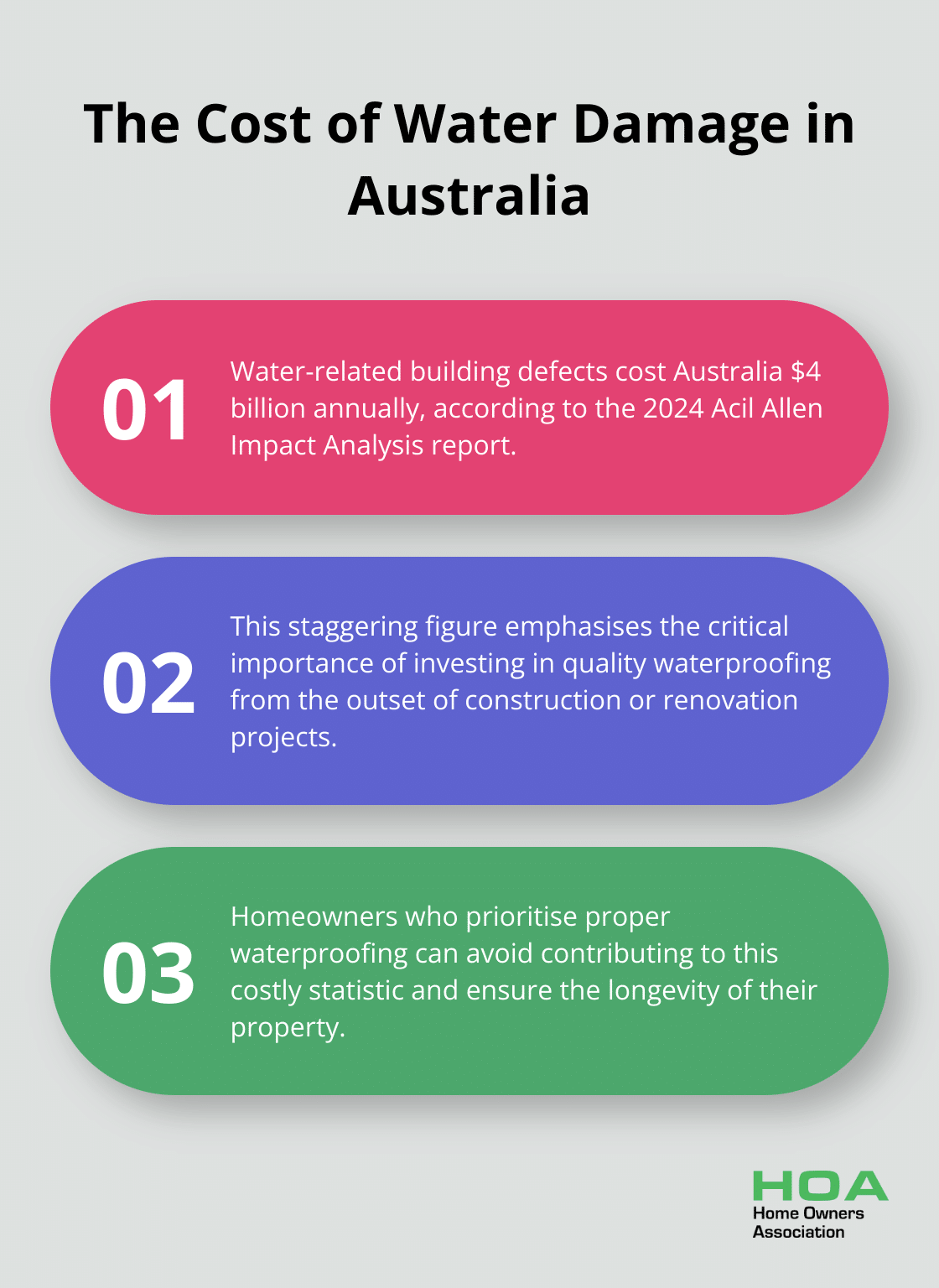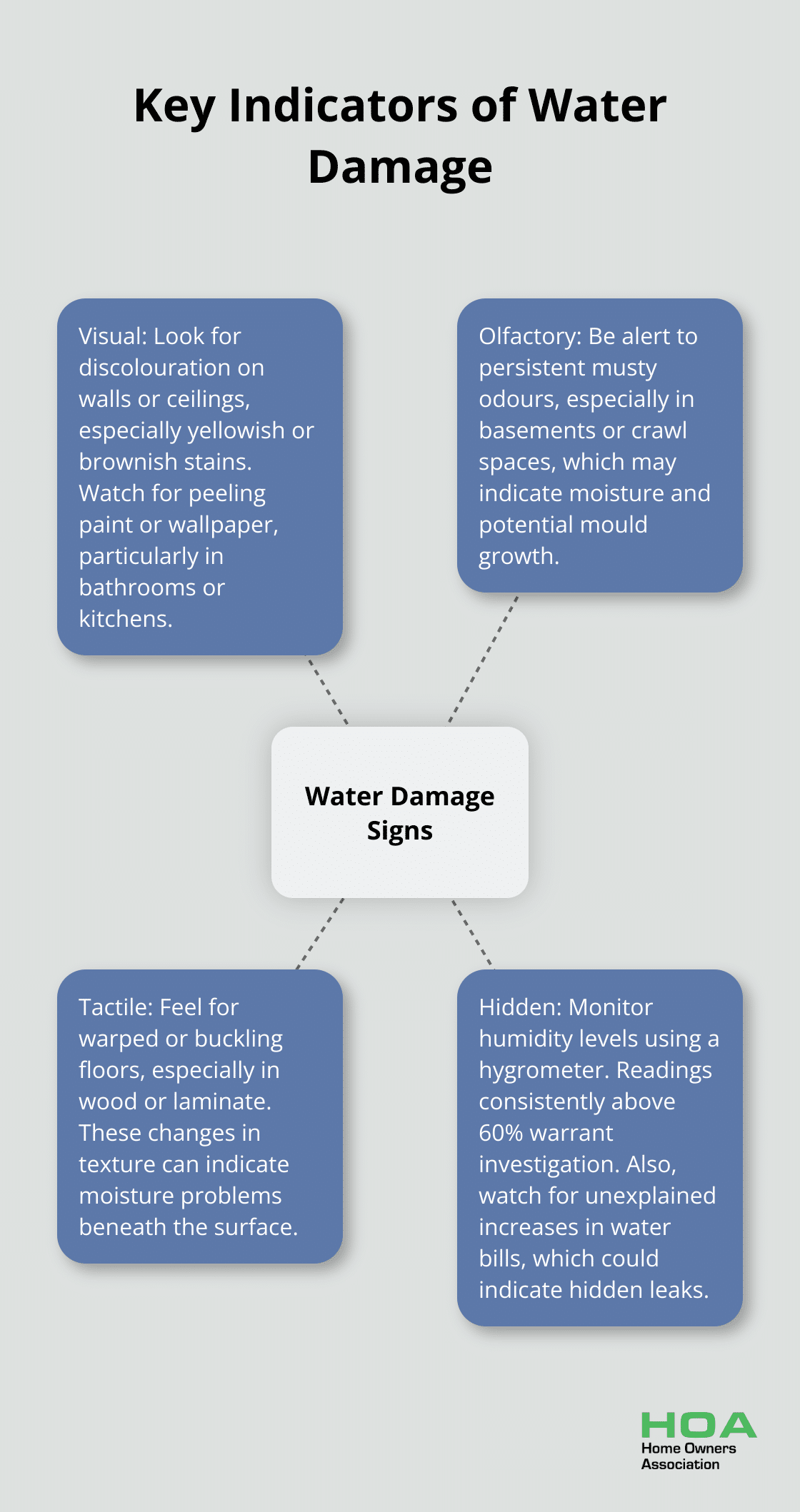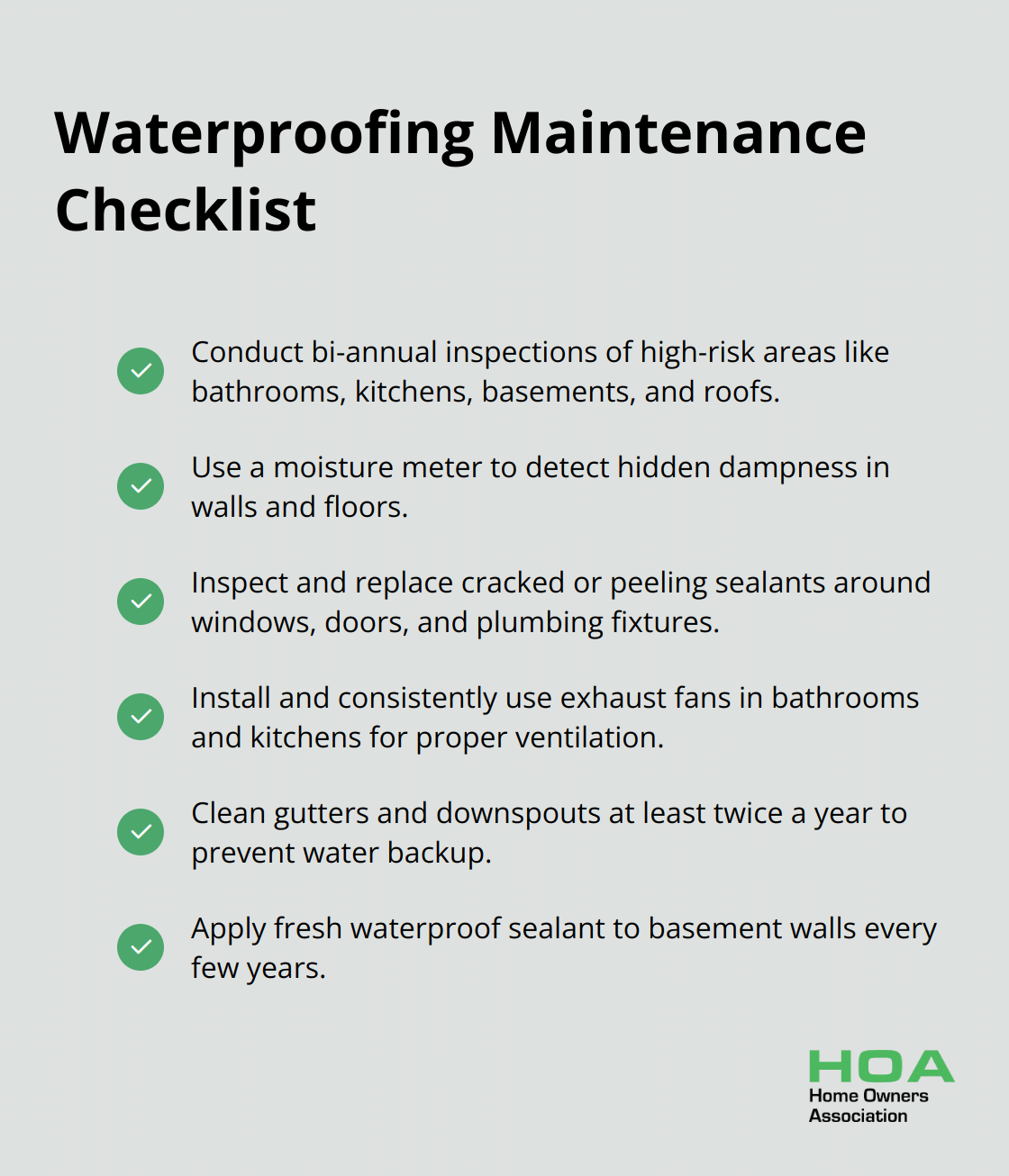
At Home Owners Association, we understand the critical role of waterproofing integrity in protecting your property. Water damage can lead to costly repairs and health hazards if left unchecked.
This guide will walk you through the essentials of maintaining effective waterproofing in your home. We’ll cover everything from identifying potential issues to implementing preventative measures that safeguard your investment.
What Is Waterproofing and Why Does It Matter?
The Essence of Waterproofing
Waterproofing is the process that makes a structure or object resistant to water penetration, thus preventing damage. This protective measure saves homeowners thousands of dollars in repairs and maintenance costs. The Australian construction industry recognises waterproofing as a fundamental aspect of building integrity, with its importance underscored by recent studies and regulations.
Vulnerable Areas in Australian Homes
Several areas in Australian homes require special attention for waterproofing:
- Bathrooms and Kitchens: These spaces face constant moisture exposure.
- Basements and Foundations: High-risk zones, especially in areas prone to heavy rainfall or flooding.
- Roofs: Regardless of type, they need robust protection to shield the entire structure from the elements.
Effective Waterproofing Solutions
The market offers various materials and methods for waterproofing, each suited to specific applications:
- Liquid-applied Membranes: Popular due to their seamless application and flexibility, these products conform to irregular surfaces (ideal for complex roof structures).
- Crystalline Waterproofing Additives: Often mixed into concrete during construction for basements and foundations, these create a chemical reaction that fills and blocks pores in concrete, providing long-lasting protection against water ingress.
The Financial Impact of Proper Waterproofing
A 2024 Acil Allen Impact Analysis report revealed that water-related building defects cost Australia $4 billion annually. This staggering figure emphasises the importance of investing in quality waterproofing from the outset. Homeowners who prioritise waterproofing avoid contributing to this costly statistic and ensure the longevity of their property.

Health and Compliance Considerations
Effective waterproofing not only prevents structural damage but also safeguards against mould growth, which can pose serious health risks. The Australian Building Codes Board emphasises the need for compliance with standards such as AS 3740:2021 for domestic wet areas and AS 4654:2012 for external above-ground areas. Adherence to these standards is not just a legal requirement; it protects your home and health.
As we move forward, it’s important to understand how to identify signs of waterproofing failure. Early detection can prevent minor issues from escalating into major problems, saving both time and money in the long run.
Spotting Water Damage Early: Key Indicators and Hidden Dangers
Water damage can be insidious, often concealing itself behind walls or under floors before becoming visible. Early detection can save homeowners thousands of dollars in repairs. Here’s how you can identify signs of waterproofing failure before it escalates into a major problem.
Visual Clues of Water Intrusion
Discolouration on walls or ceilings often serves as the first visible sign of water intrusion. Look for yellowish or brownish stains, particularly in corners or along room edges. These stains might start small but can rapidly spread if the underlying issue remains unaddressed.
Peeling paint or wallpaper indicates another red flag. When water infiltrates walls, it can cause paint to bubble or wallpaper to separate from the surface. If you notice this occurrence, especially in bathrooms or kitchens, it warrants further investigation.

Olfactory and Tactile Indicators
Musty odours, while less visible, provide an equally important indicator. A persistent damp smell, especially in basements or crawl spaces, likely suggests the presence of moisture and potential mould growth.
Warped or buckling floors (particularly in wood or laminate) can indicate moisture problems beneath the surface. Pay attention to any changes in your flooring’s texture or appearance.
Hidden Signs of Moisture Problems
Increased humidity levels in certain areas of your home can signal waterproofing issues. A hygrometer can help measure humidity levels regularly. Readings consistently above 60% warrant further investigation.
Unexplained increases in water bills could point to hidden leaks. Monitor your monthly usage and investigate any sudden spikes that can’t be attributed to seasonal changes or increased occupancy.
Consequences of Ignoring Water Damage
Structural damage poses a major concern. Water damage can have severe long-term effects on building structures, from compromising structural integrity to posing health hazards and economic burdens.
Mould growth presents another serious issue. The National Asthma Council Australia reports that mould exposure can exacerbate respiratory conditions and cause other health problems. Removing extensive mould infestations can be costly and may require professional remediation.
Electrical systems face risks as well. Water intrusion near wiring can create fire hazards and necessitate expensive rewiring projects. The Electrical Safety Office of Queensland emphasises the importance of addressing water damage promptly to prevent electrical accidents.
Regular inspections and prompt action at the first sign of trouble are essential to maintaining your home’s waterproofing integrity. In the next section, we’ll explore best practices for waterproofing maintenance to help you protect your investment and ensure long-term structural health.
Mastering Waterproofing Maintenance
Regular Inspection Schedule
Implement a bi-annual inspection routine for your home’s waterproofing systems. Focus on high-risk areas such as bathrooms, kitchens, basements, and roofs. Use a moisture meter to detect hidden dampness in walls and floors. These devices are crucial for finding leaks before they cause mould or structural damage.
Inspect sealants around windows, doors, and plumbing fixtures carefully. These can deteriorate over time and create entry points for water. Replace any cracked or peeling sealants immediately.
For roof inspections, check for damaged or missing shingles from the ground using binoculars. If you spot any issues, call a professional for a closer look.
Preventative Measures
Proper ventilation prevents moisture buildup. Install exhaust fans in bathrooms and kitchens, and use them consistently during and after showers or cooking. The National Asthma Council Australia reports that good ventilation significantly reduces the risk of mould growth.
Clean your gutters and downspouts regularly. Clogged gutters cause water to back up and seep into your home’s structure. Clean them at least twice a year (or more frequently if you have overhanging trees).

Apply a fresh coat of waterproof sealant to your basement walls every few years. This simple step extends the life of your waterproofing system significantly. The Australian Building Codes Board recommends products that comply with AS 4654.1-2012, which sets out the requirements for waterproofing membrane materials, ensuring they are fit for purpose, durable, and capable.
When to Call the Experts
Some situations require professional intervention. Call experts if you notice persistent dampness, musty odours, or visible mould growth.
For complex waterproofing projects (such as foundation repairs or extensive roof work), always hire licensed professionals. The Master Builders Association of Victoria emphasises that improper waterproofing leads to severe structural damage and health hazards.
Schedule professional inspections every 3-5 years, especially for older homes. These experts spot potential problems that might not be visible to the untrained eye and provide tailored solutions to keep your home dry and safe.
Utilising Home Owners Association Resources
Home Owners Association members across Australia benefit from exclusive access to trade pricing and discounts on construction, renovation, and maintenance materials. This can result in substantial savings for waterproofing projects. The association also provides expert advice and resources to ensure all projects meet the highest quality standards. Personalised guidance helps members make informed decisions throughout their home improvement journeys, including waterproofing maintenance.
Final Thoughts
Waterproofing integrity protects your property from costly damage and ensures a healthy living environment. Regular inspections, prompt repairs, and preventative measures can save homeowners thousands of dollars in potential damages. Proper waterproofing also improves indoor air quality, reduces energy costs, and enhances overall comfort.
The Home Owners Association offers invaluable support in maintaining waterproofing integrity for homeowners in Melbourne, Australia. Members can access trade pricing, expert advice, and a wealth of resources to tackle waterproofing projects with confidence and cost-effectiveness. The association’s guidance helps homeowners make informed decisions that align with local building codes and best practices.
A dry home is a happy home, and the right approach to waterproofing ensures your property remains a safe and comfortable haven for years to come. You protect your investment and maintain your property’s value when you prioritise waterproofing maintenance and leverage available resources. The Home Owners Association stands ready to assist you in safeguarding your home against water damage.





